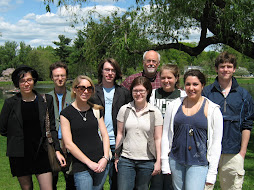By Samantha Henry, Justin Maher, Gregory Hebert and Rafal Wilson
Let it never be said that you can’t fight city hall—or take on the U.S. Army—armed only with some flyers and citizen support.
Advocates for a Maromas Plan, a grass roots environmental advocacy organization based in Middletown, Conn., has been doing just that since 1999.
“There’s nothing more beneficial than getting involved; if you wait, the thing you love could be gone,” said Barrie Robbins-Piantka, a member of Advocates for a Maromas Plan.
Maromas, an area in southwest Middletown, has had to deal with many issues that threaten the landscape. Most recently, the Army was interested in consolidating several bases onto a flat grassland field in Maromas.
“This is in Connecticut where land itself is an endangered species. Wild land is endangered and we need big areas. Without the wild, there’s no wild animals,” Piantka said. “Why would the Army want to spoil this meadow?”
Maromas is a natural and scenic geographic area adjacent to the Connecticut River, and covering about 6,000 acres – which is 30 percent of Middletown’s area, but only 5 percent of its population.
Those who want to preserve Maromas say that it has been assaulted with many threats to the landscape, from off-road vehicles that tear up the ground to a series of proposed industrial development, often supported by town hall.
Katchen Coley, also a member of Advocates for a Maromas Plan, said she first became aware of Maromas when it was threatened in 1999 with a proposed sewer-extension that would inevitably serve as an avenue for further development.
“When something is threatened, it usually wakes people up, agitating them for a while – then it’s either defeated or let go,” Coley said, emphasizing the need for continual, proactive, rather than reactive and ad-hoc approaches to defending local lands.
That fight led to the creation of the grass roots organization.
Through public hearings, many issues concerning Maromas have been brought to the public’s attention. Coley said the hearings highlighted several endangered species in the area. Also, a geologist made clear the importance of the region’s vernal pools, whose important ecological species are threatened by even the minor disturbance from off-road vehicle traffic.
“There are life-forms in vernal pools: unique insects creating biodiversity that should be preserved,” Coley said.
When the Army first proposed building a new base in Middletown, the veteran members of Advocates for a Maromas Plan worried that they couldn’t possibly galvanize more people into caring about this issue enough to come out and fight the Army, said Coley.
“But we didn’t have to,” she continued.
Robbins Piantka, a lifelong Middletown resident, showed up with the people Coley had been hoping to see. After speaking out against the plan and passing out flyers that brought even more opposition, they were able to get enough media attention to convince the Army to at least consider alternate sites.
The organization then worked to find other potential locations, studying maps and driving through town searching for parcels large enough for the Army. Eventually Middletown’s city planner found a small park on the edge of town that the Army has selected for its new base.
“It’s as happy of an ending as can be expected if you have to have an Army base in a small town where there isn’t a good place for it,” Piantka said.
Tuesday, May 26, 2009
Subscribe to:
Post Comments (Atom)

No comments:
Post a Comment